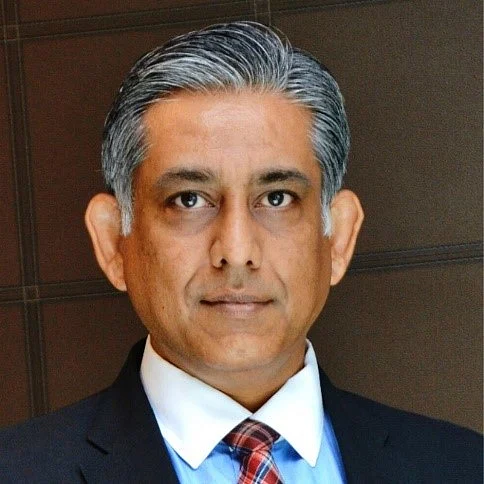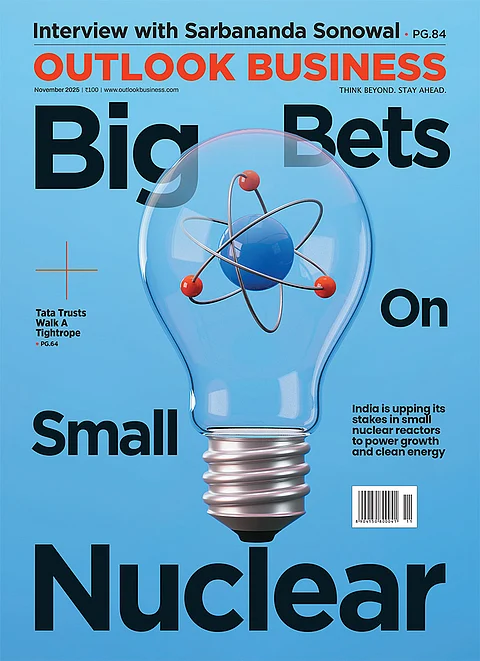As focus grows towards ‘going green’, individuals and businesses are becoming more attentive towards building sustainably and ensuring the proper disposal and recycling of the waste. The Ministry of Housing and Urban Affairs projected in 2024 that the construction and demolition (C&D) sector in India generates around 150–500 million tonnes of waste per year.
In an exclusive conversation with Outlook Business, the Chief Executive Officer and Managing Director of Tata Consulting Engineers, Amit Sharma talks about how ensuring circularity is one of the most crucial elements of building sustainable and green infrastructure for their customers.
Q) Can you tell me about how TCE is working in terms of scaling India's transition towards a greener infrastructure?
A) Our focus area, be it infrastructure or manufacturing plant setups, is optimally designing something to have a total cost of ownership that is sustainable and optimal. About 12 years back, we acquired a company that we built over time, called Ecofirst. That company's tagline is sustainable by design. They are also the key players with Indian Green Building Council (IGBC) to look at green building certifications and designing. They have worked on rehabilitation projects on heritage buildings, including the Bombay House which is green certified, and few other iconic properties. But over the years, they have been working on built infrastructure and finding ways to ensure that the design and products are energy-efficient, have lower ownership costs, and incorporate innovative recycled materials in these areas.
Of course, energy is the main story around this. When designing something, one needs to ensure it is efficient, starting with whether the layout can blend with nature to minimize the need for extensive cutting and filling at the site. Additionally, designing efficiently involves energy analysis and when it comes to materials, adopting a more modular and sustainable approach. So, Ecofirst is our subsidiary that focuses on that.
Other than that, on sustainable design, we are working with academia on certain areas of circularity, with metals like steel, aluminum and copper recycling, but also on certain innovative areas like precast, prefab as well as 3D printing of civil engineering structures. Something that allows recycling of demolition waste or other waste materials to make these buildings more green and sustainable.
Q) Can you expand on your efforts in circular economy and recycling of demolition waste?
A) Construction also involves steel and the US market circulates 90% of the steel and creates only 10% new material. So I think that's catching up even for aluminum, which is also a construction material. Thereby, recycling of aluminum is something we are doing both in India and outside. You can efficiently use cement and concrete by reducing waste and cost by pre-cast and pre-fab.
However, the area we aimed to push further was finding ways to leverage construction waste or repurpose materials from demolished buildings. We are exploring ways to turn this construction and demolition waste into valuable resources, pushing the boundaries of sustainable engineering and circularity. Our teams are working with research institutes, towards developing innovative solutions that use industrial by-products and recycled waste to create advanced cementing materials suitable for Civil 3D printing. Beyond materials, we focus on integrating sustainable design and new technologies to build a resilient and future-ready urban environment
But this is something that we've invested in the past couple of years. And I think it's an interesting way to look at circularity, because it allows standardisation and modularisation, from low cost housing to making infrastructure in hard to reach sectors or areas across India. This technology would be helpful. We call it 3D civil printing.
I always think that green is as much about green production but about circularity as well. The problem with circularity is that it doesn't create new things. So the banks and lenders do not invest. But circularity is very important. Without circularity, we would never achieve our net zero or low carbon future.
Q) How are you taking help of AI, IoT or digital twin technology in sustainable infrastructure sector?
A) One is the design and material that allows sustainability but it is the whole energy analysis that allows sustainability and also to maintain the asset in the most optimal manner, which is called the total cost of ownership. So it’s not just Capex but also Opex. Digital twin allows you to better manage the asset, to keep its life extended, to make sure it's upgraded at regular intervals and it does not disrupt operations. It is a concept that we have used in the plant engineering space, like refineries and steel plant.
And that's an area where it's in early stages in India. So, both policy as well as an understanding of optimising the Opex safety plays a role. We are looking at that asset management related to buildings and extending and ensuring their life is extended in a safe manner.
Q) How does TCE give solutions to companies aiming for transition towards green infrastructure?
A) I think with ESG and the green trend, companies want to be identified creating green infrastructure, green buildings but the challenge is justifying sometimes the additional cost around that.
And if the cost has a business case, you have to look at the whole life cycle of the asset. And the business case is much more positive when we look at both capex and opex. Just creating a business case on the capex reduction is challenging because any alternate or new materials would obviously have extra cost involved.
But if that is justified in terms of its low operating cost, having a better resilience and better lifespan, then it pays for itself. That's where the innovation is required to convince your stakeholders, your customers, that investment in green is good. Apart from the intangibles on ESG, it also gets you tangibles in terms of ROI over a total cost of ownership of the asset. Those are the innovations that are required for the business case justification, the selection of materials, looking at the lifespan and operating metrics.
I think that's where people have to be creative and innovative. That's the challenge because not every customer would be comfortable with a higher investment. However, I think over the years we have been pretty successful in convincing some of the stakeholders to adopt these areas. Of course, their own initiative on ESG has also been commendable and one needs like-minded customers to cater to their thought process.






























